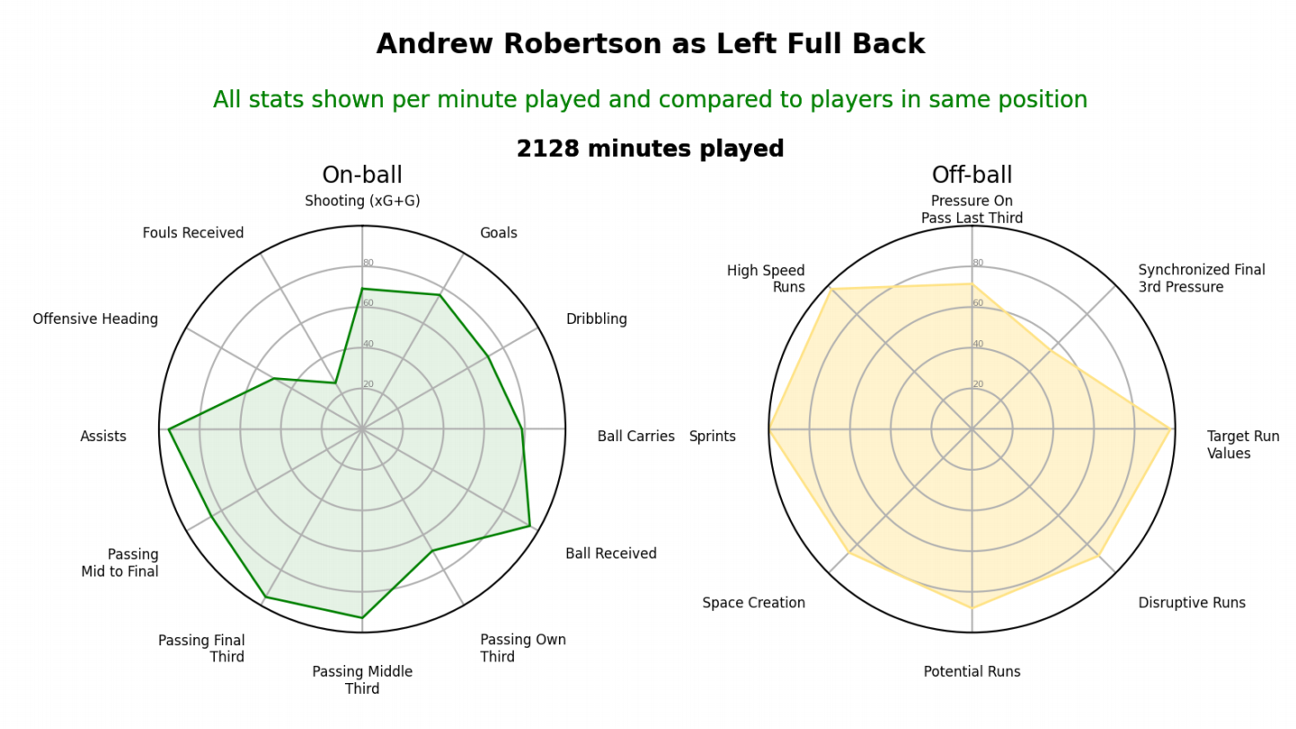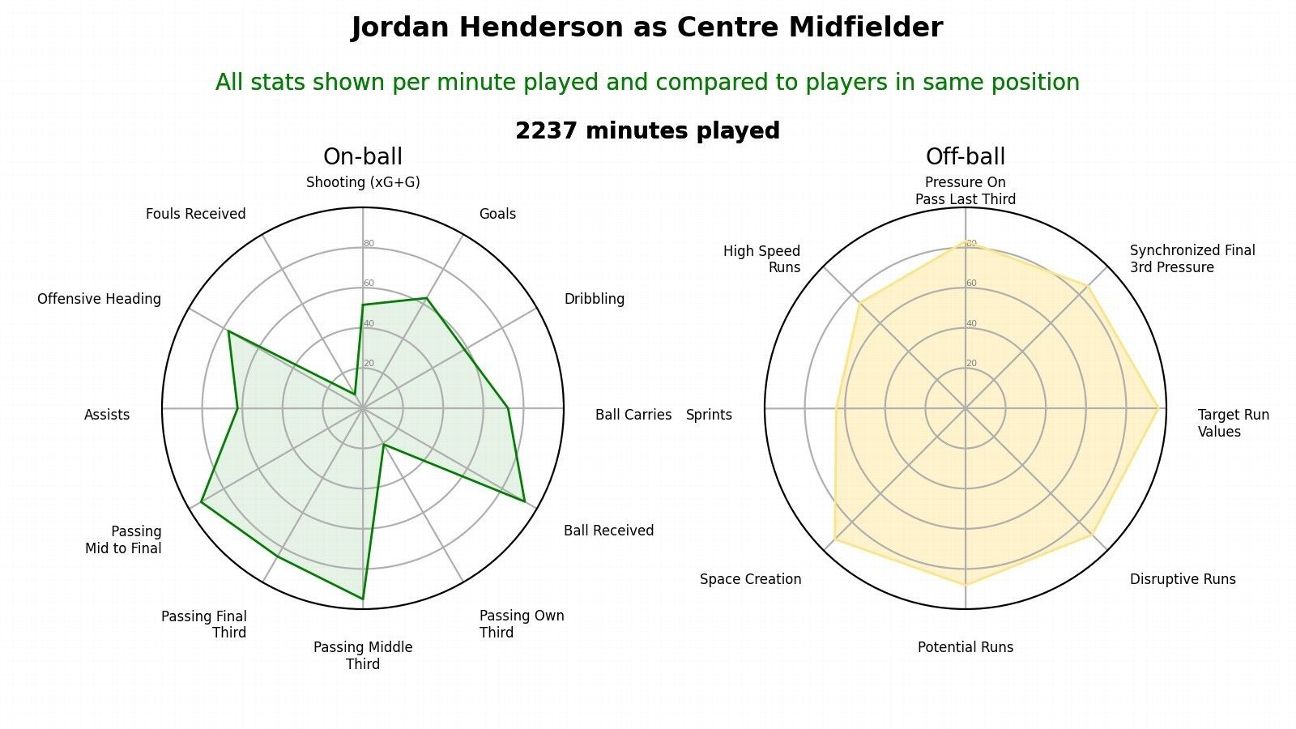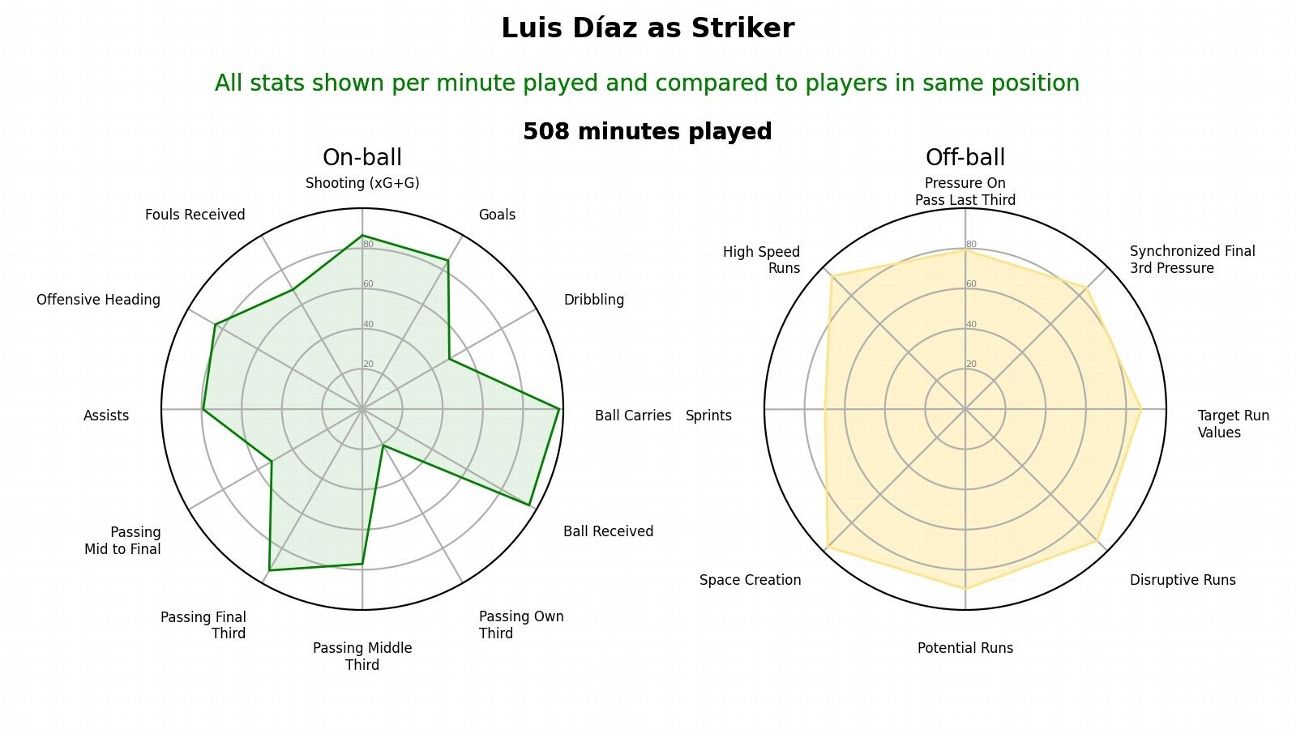Jurgen Klopp has transformed Liverpool since arriving in 2015. What will he do over next four years?
When he was hired back in early October of 2015, Jurgen Klopp was asked a question about Liverpool‘s Premier League title drought. Maybe “drought” is the wrong word, as it suggests the absence of something that once existed. Since the breakaway Premier League was formed in May of 1992, Liverpool hadn’t won a single title.
“This is one of the biggest problems you have here at Liverpool,” he said. “The Premier League is one of the most difficult leagues in the world because five, six, even seven teams can win, in the end only one can be the champion. The rest will be disappointed.”
At the time, Liverpool were in 10th place, had won just four of 11 matches in all competitions, and had only finished in the top four once since the turn of the decade. Leicester City, meanwhile, were just starting their improbable title run, and the Premier League seemed both easier and harder to win than ever before: Leicester were doing it, but in England you had to be better than so many other big clubs.
In Spain, two and sometimes three sides came into the season with legitimate title aspirations, Italy and France had become Juventus or PSG and then everyone else and, while Klopp’s Dortmund disrupted the hierarchy a couple times in Germany, Bayern Munich had reasserted their dominance once again. In England, though, you had to be better than Manchester United, Manchester City, Chelsea, Arsenal, and Tottenham. Then you had to contend with the Leicesters and Evertons and West Hams and Newcastles and Southamptons — whichever other clubs rose up from the middle, year after year.
It also seemed like the weekend grind was taking its toll in midweek matches on the continent. Tasked with competing in a more competitive domestic league, only one Premier League team had reached a Champions League final since 2010 — and the team that did (Roberto Di Matteo’s Chelsea) were, somehow, something of a one-off Cinderella run.
This is the environment Klopp stepped into and less than three years later, he had Liverpool in the Champions League final. A year after that, they won their sixth European Cup, followed by their first Premier League trophy in the 2019-20 season. While the Premier League’s comparative wealth has only increased, Klopp — and Pep Guardiola — have turned the most competitive league in the world into one where only two teams seem to have a realistic shot of winning it all. And after Tuesday’s win over Villarreal, Liverpool will now appear in three of the last five Champions League finals.
What else is there to do? What else can even be done? With Klopp signing a contract extension through 2026 last week, let’s take a look.
How good are they right now?
Here’s how the club have performed in every Premier League season under Klopp:
- 2015-16: 1.6 points per game, plus-0.5 goal differential, plus-0.42 expected goal differential
- 2016-17: 2.0 PPG, +0.9 GD, plus-0.66 xGD
- 2017-18: 2.0 PPG, +1.2 GD, plus-1.03 xGD
- 2018-19: 2.6 PPG, +1.8 GD, plus-1.20 xGD
- 2019-20: 2.6 PPG, +1.4 GD, plus-0.84 xGD
- 2020-21: 1.8 PPG, +0.7 GD, plus-0.65 xGD
- 2021-22: 2.5 PPG, +1.9 GD, plus-1.68 xGD
It’s just a steady, incredible improvement across all metrics — save for the 2019-20 season when they, uh, won the league with 99 points, and last year, when most matches were played behind closed doors and they suffered a team-wide injury crisis.
Put another way: Two of Jurgen Klopp’s previous teams won the second- and fourth-most points in Premier League history … and this year’s team is significantly better than both of them. They have the seventh-best goal differential in Premier League history, despite still having four games left on the schedule. Per Stats Perform’s database, which goes back to the 2008-09 season, Liverpool have the second-best per-game xG differential in that era, second only to this year’s Manchester City (+1.86).
The Club Elo rankings, which update a team’s rating based on the result of a match and the quality of the opponent, see Liverpool as the best team in the world, just slightly ahead of City. The FiveThirtyEight rankings, which do the same thing as the Elo rankings but also take into account underlying performance, also see Liverpool as the best team in the world, again just slightly ahead of City.
A simpler way to assess the current squad’s greatness, though, is that they’re guaranteed to play every possible match they could’ve played this season: all 38 Premier League games, plus every match in the Carabao Cup, FA Cup and the Champions League. No English club has ever done that. And according to FiveThirtyEight’s projections, there’s now a 13.6% chance that they win all four. Unlikely, but still very real.
In other words, Jurgen Klopp’s Liverpool are pretty much as good as any team, not employing peak Lionel Messi or Cristiano Ronaldo, could conceivably be.
Can this team keep it up?
A big reason why this team is so damn good is that it’s built upon a core of players who all hit their primes at the same time. While a player’s peak years are broadly somewhere in the 24 to 28 range — give or take a year or two in either direction depending on position — there’s at least a tiny bit of evidence that peaks are extending a bit at the highest level of the game.
In the Premier League this season, Liverpool’s average age, weighted by minutes played, is 28.6. Only West Ham, Watford, and Burnley have older squads. The youngest team in the league, Arsenal, has an average age of 25.2
In goal, Allison has played 94.1% of the available minutes. He’s an elite shot-stopper, sweeper and cross claimer. More specifically, he’s without peer when it comes to stopping 1v1s, making him a perfect fit for Liverpool’s incredibly high line, which has drawn opponents offside 140 times in the Premier League so far this season, 60 more than any other side. When opponents break through, they still have to get past Alisson, and that isn’t likely to change any time soon. He’s 29, and since goalkeepers do tend to peak later than outfielders, I’d expect him to still be Liverpool’s keeper through the end of Klopp’s new contract.

Across the back line, Virgil van Dijk has played 94.1% of the minutes, too. He’s the best center-back in the world, and probably the least replaceable player on the roster. He’s also going to turn 31 in July. Center-back is another position that has historically been pretty kind to aging players, but despite his laconic style, VVD’s being asked to play the position in a new physically demanding way compared to center-backs in the past. Liverpool leave a ton of space behind their backline, and it’s up to him and the other center-back to cover all of it.
The other center-back has typically (82.4% of the minutes) been Joel Matip, who’s been brilliant on the ball this year, but who’s also just a couple weeks younger then Van Dijk. However, there’s a clear succession plan. Twenty-two-year-old Ibrahima Konate has played most of the important minutes in the Champions League knockouts and in a number of higher-profile Premier League games. Per Twelve Football’s tracking data, Van Dijk ranks right around the 60th percentile for both sprints and high-speed runs (essentially, slower sprints) for Premier League center-backs. Konate, however, ranks better than the 90th percentile for both. Perhaps with Konate running around next to him for the next four years, Van Dijk’s physical decline won’t have as much of an impact on the team’s performance.
With the full-backs, Trent Alexander-Arnold is arguably the best creative passer in Europe, and he’ll only be 28 when Klopp’s current contract ends. On the other side, Andy Robertson recently turned 28, which would put him at 32 come the end of the 2025-26 season.
The concern with Robertson is just how physical his game is. The radar on the left, from Twelve, just rates how often he does a given action, while the rader on the right shows how often he’s running off the ball and creating various kinds of value with his movement. Without the ball, Roberton is an absolute freak, 99th percentile for his position at sprints and high-speed runs.

There should be some concern how that kind of play-style ages. If both Robertson and VVD drop off by, say, 10 or 15 percent over the next few seasons, it won’t necessarily be notable to the naked eye, but the team’s performance would drop off from its current level. You can throw Fabinho into that mix, too, who doesn’t play the game with the same physical verve as the Scotsman, but is the same age as Robertson. It also applies to Jordan Henderson, who’s 31 and is basically the Andy Robertson of full-backs.

The third most-used midfielder after Fabinho and Henderson is their skeleton key: Thiago. He’s only played 45 percent of the Premier League minutes, but the team has been unbeatable with him in the starting XI this season and very nearly un-draw-able, too. On the one hand, he’s 31 already and will be 35 come 2026. On the other hand, he’s played fewer league minutes than he played last season. Liverpool put up these incredible overall performances with Thiago off the field more often than he’s on it. They’re absolutely better with Thiago on the field, but the team is already built to function without him, too.
Three years ago now, I wrote a piece wondering about the future of Liverpool’s front three. Mohamed Salah, Sadio Mane and Roberto Firmino were all the same age, they were likely to decline all at the same time, and their contracts were lined up to expire at once. It used to feel like this was the chokepoint of Liverpool’s future: Do you sell one of them while you can still get something close to $100 million? Do you re-sign them all and eat the risk that they all fall off a cliff at the same time? Instead, those answers almost seem unimportant now.
The questions still exist — at 29, Salah, Mane and Firmino’s contracts all expire in a year, right as their theoretical primes end — but Diogo Jota and Luis Diaz now exist as Liverpool players. The former is an absolute workhorse without the ball — both in and out of possession — and he’s also third in the league in non-penalty goals. Diaz, meanwhile, has become a first-choice starter and a borderline undroppable player. Despite joining the squad in the middle of the season, he’s doing just about everything:

Will Firmino ever become a key Liverpool player again? Will they pay Salah what he wants? Can Mane keep playing at this level into his 30s? Whatever the answers end up being, Diaz and Jota all but ensure that Klopp’s attack can continue to be one of the best in the world.
What’s next?
They’re set at keeper for the foreseeable future — Alisson is signed through 2027 — and despite the age concerns along the backline, I’m not sure how much there is to be done. They could use a backup to TAA at right-back, while Kostas Tsimikas is 25 and was a perfectly adequate backup to Robertson in an increased minutes load this year. A local kid, Alexander-Arnold feels like a lifelong Liverpool player, while Tsimikas is signed through the end of 2024-25 and Robertson through 2025-26.
At center-back, Konate will likely take over as the second first-choice center-back as soon as next season; he’s around through 2025-26. VVD’s current deal expires the year prior, and Matip’s is up the year before that. I still wouldn’t totally write off Joe Gomez’s future with the team; he was a starter on the 99-point team at 22 years old! But he’s 24 and an England international. I can’t imagine he’ll wanna wait around until VVD disappears, and his contract is up in two seasons. The most likely outcome seems to be Gomez leaving and maybe another young Konate-type center-back — someone you can ease into minutes — coming in over the next few seasons.
In the midfield, Fabinho is signed through the end of Klopp’s current deal. Henderson is signed through the season before that, and at 31 he’s already being eased out of his role as a first-choice midfielder. That trend is only likely to continue. Thiago, meanwhile, has two years left on his deal and shouldn’t be expected to play any more than he has this season as he ages deeper into his 30s.
Based on recent choices, 27-year-old Naby Keita might finally be first-choice in Klopp’s eyes, but his contract is up after next season. Harvey Elliott was first choice before his ankle injury; he’s 19 and signed through 2026. I’d expect him to be back in the mix as a potential starter next season. Curtis Jones still hasn’t been able to establish himself as a consistent contributor, but he’s looked really promising in limited minutes. He’s 21 and signed through 2025. Alex Oxlade-Chamberlain has a year left on his contract and likely won’t be with the club beyond then. James Milner is 35 and in the last year of his deal; he will be playing professional soccer until the Earth is engulfed by the sun.
The midfield, then, seems like the spot where the team could sign a player who immediately becomes a starter. Borussia Dortmund’s Jude Bellingham has been linked with the club non-stop, and that signing is almost too obvious: a young, analytics darling from Klopp’s former club who would add a rangy, physical, ball-carrying aspect that Liverpool’s midfield still lacks. We saw that in the first half of the Villarreal match, when the team just got overwhelmed with pressure for 45 minutes.
The links with Monaco’s Aurelien Tchouameini also point in this same direction. Meanwhile, Jones and Elliott both can’t really play in a deeper role, while Henderson’s legs are going and Thiago can’t be relied on there, either, so some depth beyond Fabinho and to eventually take over for Fabinho should arrive at some point, too.
As for the front three, Diaz is signed through 2027 and Jota through 2025. They’ve reportedly agreed a deal for Fulham’s Fabio Carvalho, who just scored 11 goals and added 7 assists in the Championship as a 19-year-old.
Salah has spoken somewhat opaquely about his next contract, while Klopp has said that his extension won’t affect the potential new deals for either Salah or Mane. Given owner John Henry’s history of not paying the marquee players on the Boston Red Sox, it would also not shock me if either one left. The future of Firmino, meanwhile, seems like it probably depends on the future of the other two, but given how the cards have fallen outside of Liverpool, it wouldn’t shock me if the club re-signed them both.
There’s no reason to think that Liverpool won’t be challenging for both the Premier League and the Champions League for the next four years. Manchester City have a bunch of question marks throughout the roster — namely, how do you replace Kyle Walker? — but they can spend to fix anything. Chelsea are, uh, in a state of flux, while the likes of Arsenal, Manchester United, and Tottenham are still really far away from Liverpool’s current level.
Elsewhere in Europe, Robert Lewandowski and Thomas Muller aren’t getting any younger for Bayern Munich. None of the Italians clubs are anywhere close. Paris Saint-Germain remain deeply imperfect. Real Madrid will have to rebuild at some point, and Barcelona are already in the middle of doing the same.
The combination of an analytics-forward front office and Klopp’s masterful management have turned Liverpool into perhaps the best soccer team in the world. They seem to never miss on signings, partially because of good luck, but also because they know who to target and their coach knows exactly how to use however they give him.
At Dortmund, Klopp lasted for seven seasons and had turned the club into one of the best teams on the continent by the time he left. In his seventh season, he’s already there with Liverpool; they’re at the top. Can they maintain it for four more years? A better question might be: With Klopp still around, who’s gonna pass them?
Credit: Source link